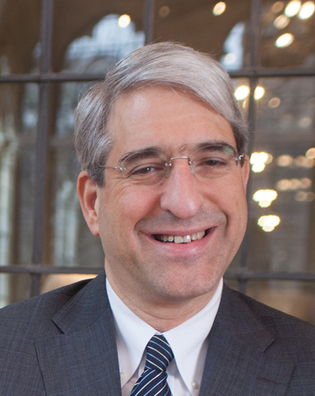 loading
loading
Q&A: Peter SaloveyCrossing the bordersFostering cross-departmental thinking.  Mark OstowView full imageY: The new dean of the Faculty of Arts and Sciences told us that one of her responsibilities is to foster “cross-departmental thinking” [Light & Verity, July/August]. Is this part of your effort for one of your four core goals—a “more unified Yale”? S: Yes. There are many elements to that goal, but one is to bring parts of Yale together to create opportunities for new kinds of teaching and scholarship. Yale has some advantages in pursuing this goal. First of all, our scope is extremely broad. We have a dozen professional schools, some 50 departments and programs offering the PhD, and about 75 majors for undergraduates—not to mention the collections in our libraries and art galleries and the Peabody Museum. Yet the scale of these schools, departments, and programs is actually rather modest: most are smaller than their competitors. The law school is among the smallest of the great law schools, for example. It’s similar for the medical school and the School of Management, and also for many departments in the arts and sciences. And that combination of broad scope and modest scale is a great advantage. If the scale is too big, it takes too much effort to get parts of the institution to play together: you have to steer two Queen Marys toward each other, and it takes a long time to make the turn and converge. On the other hand, if your scope is too modest, you just don’t have the necessary pieces. At Yale it’s possible to create unique combinations that, I believe, don’t exist anywhere else. Y: In this issue our cover story will be on Nicholas Christakis’s [’84] interdisciplinary networks research. S: His work is wonderful, and when we recruited Nicholas, we encouraged him to establish an institute for network science. He started giving talks at Yale, and faculty members from other fields recognized the common area of scholarship that his work suggested. Electrical engineers and computer scientists thought about communication networks. Biologists thought about networks formed within a species, like schools of fish. Mathematicians thought about how one might write equations describing the characteristics of networks. And so on. So all of a sudden you have many different disciplines coming together to study the same phenomenon. There is perhaps no other place on earth modeling and studying networks in the same way, and Nicholas himself devotes much research attention to determining how health information flows through social networks. Y: Academic departments are often described as separate silos, and the different schools of Yale are administratively separate. How do you encourage them to work together? S: I would love to raise a dedicated fund to support research or teaching that involves multiple schools, departments, or programs. Using funds to seed collaborations has worked quite effectively, for example, for the Yale Climate and Energy Institute—an interdisciplinary network studying climate change and energy policy from the perspectives of geology and geophysics, economics, the life sciences, law, and environmental studies, among other fields. The institute provides funds for collaborative research grants as an incentive to bring people together. But sometimes the incentive is the interest and motivation of our own students and faculty. We were able, through gifts from generous alumni, to create the Center for Engineering Innovation and Design. This is a place where students can roll up their sleeves and fabricate new things. Soon after it opened, School of Art students were working side by side with the engineers—to design objects that answer human wants and needs and that are also aesthetically pleasing. Maybe the next Steve Jobs will come out of that center. In many fields, the most important discoveries may require a group of people with different areas of expertise working together. There’s a great example right now at our West Campus. The Institute for the Preservation of Cultural Heritage has two senior chemists whose labs study how materials—pigments and coatings or tapestries or canvases or stone—are affected by the environment. They’re right next door to a great conservator of paintings. Nearby is a group concerned with how to digitize the artifacts of human culture in ways that allow them to be studied, shared, and preserved forever. And they are all next door to people thinking about public policy issues around the preservation of cultural heritage. I don’t think there is another university in America that has this kind of multidisciplinary resource. Y: Why is interdisciplinary work important? S: Why do we use the word “discipline” to describe a field of study? Because that field has a characteristic method for how one makes observations and draws conclusions. And that method is a discipline: it has rules—what counts and what doesn’t. You need that discipline to structure your observations, particularly of a new problem. Often the earliest findings on a new question will be discipline-based. Over time they can become multidisciplinary, if investigators from other fields look at the problem using their own rules. Interdisciplinarity exists when they combine those rules and come up with yet a new way to observe. In exercises to help students become more creative, we’ll often say: stand on your head and look at a scene you’re familiar with, and you’ll see something different. The idea is to break their characteristic frame of reference. In a way, that’s what looking at something from the vantage point of a different discipline allows you to do. It’s looking at it from a new angle, using different rules of the game. You get new ideas; you may stimulate breakthrough scholarship.
The comment period has expired.
|
|